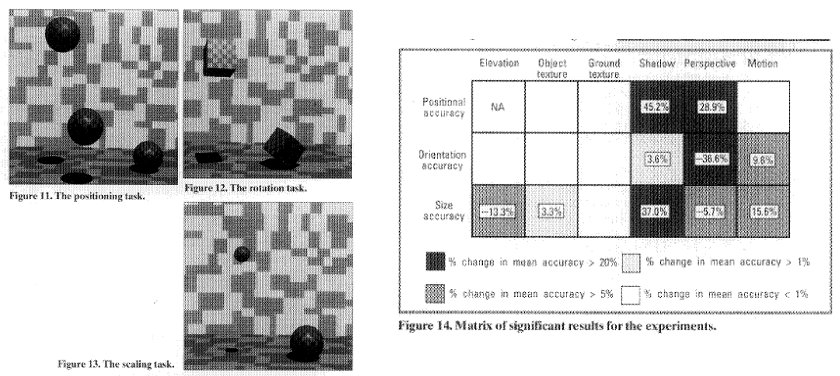|
|
[WFG92]
Cornell University Program of Computer Graphics |
|
||||
Perceiving spatial relationships in computer-generated images.Leonard R. Wanger, James A. Ferwerda, and Donald P. Greenberg.IEEE Computer Graphics and Applications, May 1992. The perception of spatial relations in computer generated images was studied in three psychophysical experiments. In each experiment, the accuracy with which subjects were able to perform interactive spatial manipulation tasks was measured while visual cues for spatial relations were varied. Three tasks (positioning, orienting, and size scaling) and six cues (projection, relative motion, shadow, object texture, ground texture, and elevation) were studied. Results indicate that in the positioning task where spatial location information is needed, shadow and perspective projection cues greatly increase performance accuracy. In the orient ing task where spatial location is unimportant but relative alignment information is needed, orthographic projection and motion cues have substantial positive effects on performance accuracy. Finally, in the size scaling task where both spatial location and object-relative size information is needed, interactions between combinations of the above-mentioned cues have the greatest effect on performance accuracy. The experiments suggest that knowledge of the task-at-hand should be taken into account in deciding what visual cues should be included in a image. These results have implications for those concerned with three-dimensional interactive computer graphics, from designers of geometric modeling and visualization software to hardware engineers implementing rendering algorithms for graphics workstations.
This paper is available as a PDF file WFG92.pdf (2.6M).
| ||||||
| ||||||
